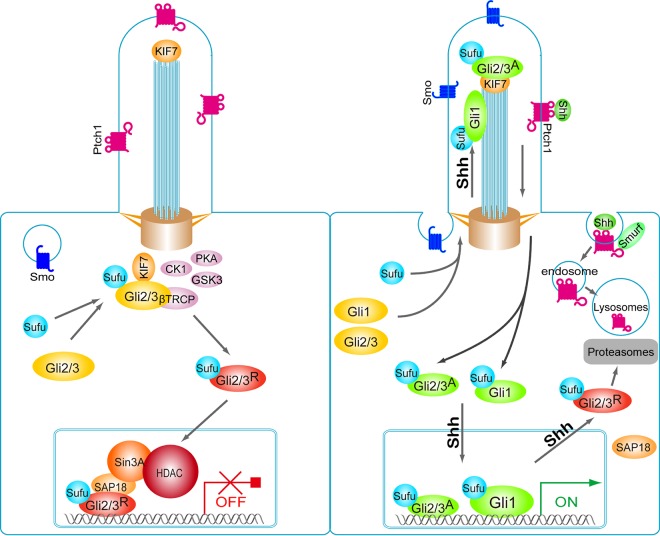FIG 7.
Model depicting roles of Sufu in chaperoning Gli functions during Shh signaling. In the absence of Shh little Gli1 is made, whereas Sufu associates, stabilizes, and accompanies nascent Gli2 and Gli3 to the basal body of the primary cilium, where the latter two are phosphorylated by PKA/GSK3/CK1 kinases and processed into the truncated repressors. The resultant Sufu-GliR complexes traverse unrestrictedly to the nucleus, forming repressive transcriptional complexes on the chromatin. Here, Sufu also actively repress transcription via its interaction with SAP18 and the corepressor complex. In the presence of Shh, formation of truncated Gli2 and Gli3 repressors is blocked, and Sufu-GliR complexes fall off the chromatin and are exported out of the nucleus either as dissociated components or together for turnover, resulting in the induction of Gli1 and other pathway target genes. Sufu accompanies nascent Gli1 and full-length Gli2 and Gli3 traversing through the primary cilium, where they are modified by Smo-dependent events and become competent to be imported into the nucleus, where Sufu-GliA complexes bind the chromatin and further activate target gene expression. Note that in this model, Shh promotes the movement of Sufu-GliA into and Sufu-GliR complexes out of the nucleus concurrently, but the nuclear import of Sufu-GliA complexes is coupled to its trafficking through the primary cilium.

